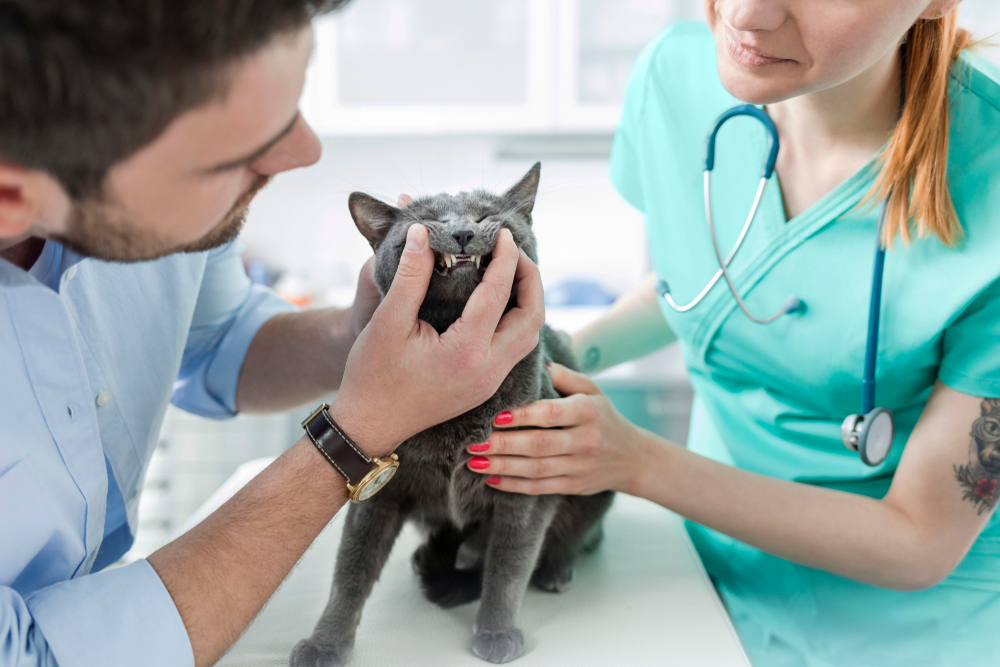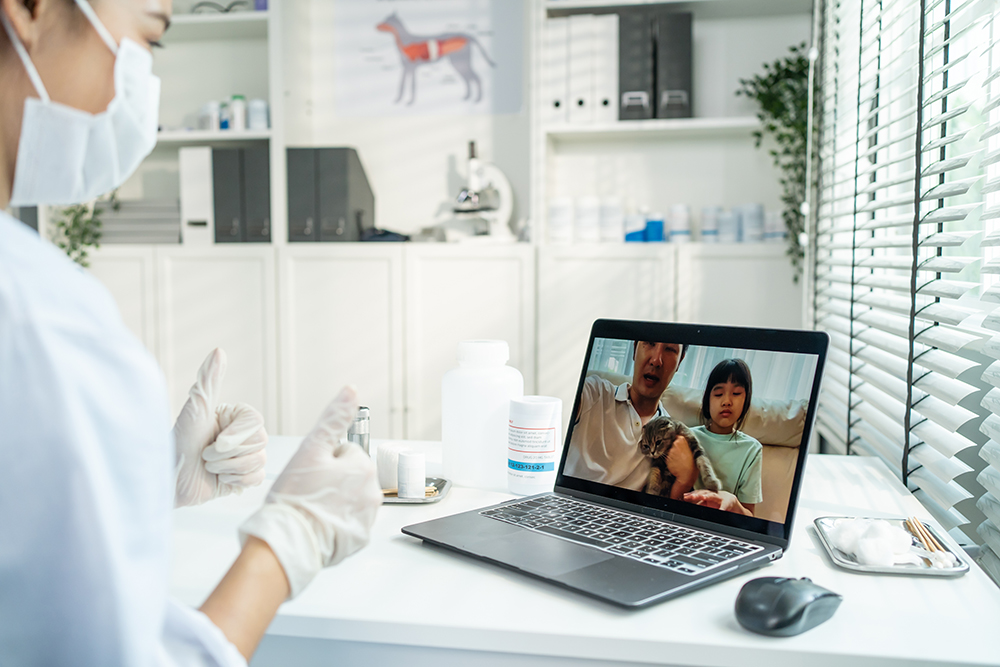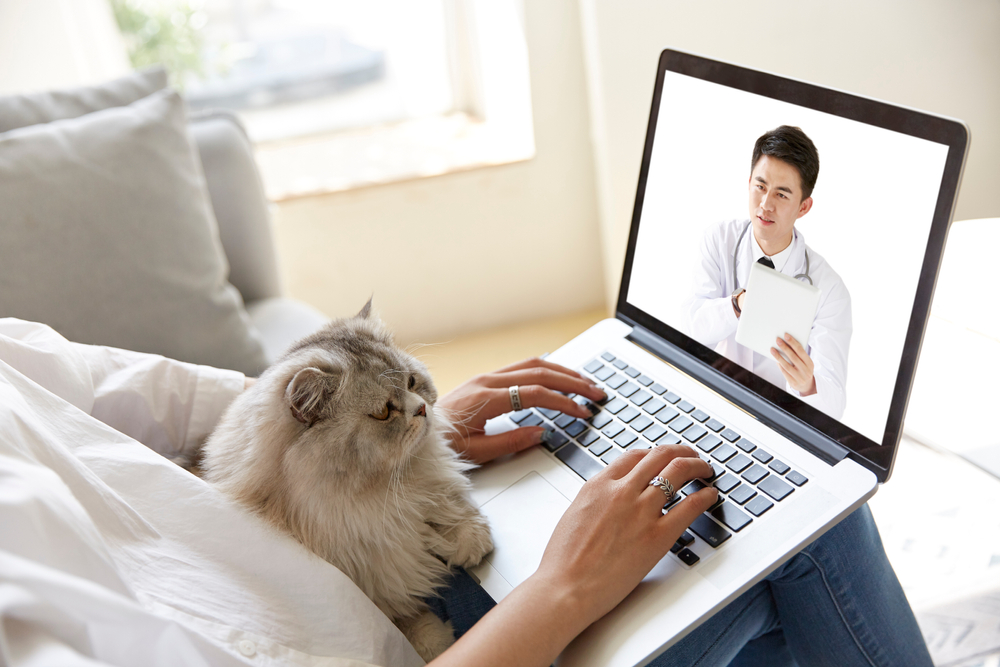Consulting an online veterinarian is convenient and less stressful for your pet. However, if you suspect that your cat has an infection and needs antibiotics, is this the right option for you? The answer is quite complicated since then it depends on the laws in your state, the type of telehealth service you’re accessing, and your cat’s illness.
The ability to prescribe medication, such as antibiotics, depends on developing a veterinarian-client-pet-relationship as well as an accurate assessment of your cat’s health. Because this concept is so complex when viewed through the lens of telehealth, read on to learn more about the facts and legalities of this situation.

The Veterinarian-Client-Pet-Relationship
A veterinarian-client-pet relationship (VCPR) is a legal term for the agreement between a veterinarian and a pet owner, also known as the client, to provide treatment to the client’s pet. The VCPR means that veterinarians have the right to prescribe drugs and make diagnoses and the responsibility to maintain medical records. Within this framework, it is the clients’ responsibility to follow the veterinarian’s instructions.
Without a VCPR, telehealth services are known as teletriage or teleadvice and are limited in what they provide. Once a VCPR is established, the veterinarian can practice telemedicine to provide a diagnosis, prescribe medication, recommend treatment, and more.
Traditionally, a VCPR could only be established by personal examination. However, this area is growing and changing. We will review some of the complex laws that dictate the VCPR in the United States.
💛 😺 Talk to a Vet Online From the Comfort of Your Couch!

If you need to talk to a vet but can’t get one, go to PangoVet. This is an online service where you can talk to a vet online and get the personalized advice you need for your pet — all at an affordable price!
Federal Laws
A federal VCPR can only be generated through an in-person review, but it can be maintained electronically. A federal VCPR is required when:
- Veterinarians prescribe human medicine to their animal patients, including over-the-counter medicines.
- Use of FDA-approved animal drugs in ways other than the approved label.
- Pet medications must be combined.
Because these situations are so common in veterinary practice, there is a high chance that the medication your cat needs will require an in-person visit.

State Laws
State laws surrounding the establishment of a VCPR can be found in the state’s Veterinary Practice Act. These ever-changing regulations determine whether a VCPR can be established or maintained electronically. Some states allow a VCPR to be established electronically, giving their veterinarians the right to prescribe medications via telemedicine.
There are also more state-specific rules on where drugs can be prescribed, prescription timeframes, and what constitutes a telemedicine consult. For example, a video chat may be a requirement. So, to fully answer your question, you will need to check the current Veterinary Practice Act for your state.


Other Factors Influencing Prescribing Medicines
Assuming your state allows a VCPR to be established electronically, and your pet does not require any medication that would require a federal VCPR, there are other factors to consider. These can help determine if your cat can get what they need from the comfort of your own home.
Services Platform
Where you access your online vet is important. To establish a VCPR, your veterinarian must be licensed to provide veterinary services in your state. So, if you’re accessing a video chat with a vet through international websites, chances are the service they’re providing is teleadvice not telemedicine.
On the other hand, if you accessed a consultation with a veterinarian licensed in your state, this may fulfill the requirements for establishing a VCPR.
Animal Conditions
The final factor is, of course, whether prescribing medication such as antibiotics is in the animal’s best interest. If a VCPR is established, a veterinarian should still assess your cat’s need for antibiotics accurately.
The limitations of telemedicine are that without a human exam, your vet can’t do routine things like listen to your cat’s heart, take their temperature, or perform additional tests like urine tests, blood tests , and imaging.
Therefore, in many cases, but depending on your cat’s specific circumstances, your veterinarian may not be able to prescribe antibiotics simply because the need for antibiotics cannot be determined. Despite your telemedicine consultation, you may still need to take your cat to the vet.

Should I Have a Veterinary Telehealth Consult?
If you think veterinary advice without a VCPR might be useful, you can try teletriage and teleadvice services. Situations where this might be a good idea include:
- Getting general pet care advice
- Afterhours, to determine whether or not to visit an emergency clinic
- Discussing a current diagnosis or treatment plan
- Surgical site checks
- Access to general information about specific conditions or diseases
Situations where establishing a virtual VCPR may be appropriate and veterinarians may prescribe treatment include:
- Follow-up visits
- Minor skin complaints
- Mild gastrointestinal upset in less than 24 hours
- Sudden, gentle contractions
- Behavioral concerns

In many cases, an in-person vet visit is the best thing for your pet. We strongly recommend that your cat go to a veterinary clinic for:
- Issues that are not resolved after the first telemedicine consultation
- Annual examination and vaccination
- Urinary issues
- Difficulty breathing
- Gastrointestinal signs or not eating for more than 24 hours
- Weight loss


Conclusion
When it comes to telehealth, there are many situations where it can be very beneficial, with the benefit of being less expensive than traditional vet visits. However, when it comes to getting medication like antibiotics from online vets, many laws can restrict the vet’s ability to prescribe.
Even if state laws are favorable, your veterinarian may not be able to determine the need for antibiotics through a video chat and may recommend follow-up exams or diagnostic tests. A good rule of thumb is to use telehealth where appropriate and schedule annual wellness visits to hopefully catch any problems early.
Featured Image Credit: Indypendenz, Shutterstock



